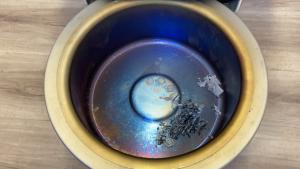VIDEO NEWS RELEASE: Don't flush, burn it! Incineration toilet could solve cesspool problem
University of Hawaiʻi at MānoaInterim Director, Hawaii Institute of Marine Biology
Stuart Coleman, 808-381-6220
Executive Director, Wastewater Alternatives and Innovations
Link to video and sound (details below): https://bit.ly/35s65hu
WHAT: The first state-of-the-art incineration toilet in Hawaiʻi that uses no water and produces no sewage is now in operation on the Moku o Loʻe (Coconut Island) at the University of Hawaiʻi at Mānoa’s Hawaiʻi Institute of Marine Biology (HIMB).
WHO: The proof-of-concept project is a collaboration between HIMB, Wastewater Alternatives and Innovations and Cinderella Eco Group. Judy Lemus, interim director at HIMB, helped facilitate the project.
WHERE: Coconut Island, Oʻahu
HOW: The toilet uses a small amount of energy from propane gas to incinerate both liquids and solids, and produces a pathogen-free, odorless ash that can be disposed of in the trash or used as a soil amendment in gardens or compost piles. The self-contained system does not require connections to municipal water, sewer or electrical infrastructure.
WHY: HIMB is connected to municipal water, sewer and electricity services on Oʻahu through high density polyethylene conduits that run underneath Kāneʻohe Bay. While cesspools are not the issue, resources are limited and utilities are expensive. The incineration toilet adds an environmentally sustainable bathroom on island for employees and visitors in a high traffic location where there were previously no facilities.
OTHER FACTS:
-
The toilet can handle four uses per hour and the ash container only needs to be emptied once per week. HIMB estimates that the five gallon propane tank will last for 120–150 uses.
-
There are an estimated 88,000 cesspools in Hawaiʻi, the highest number per capita in the country, that discharge more than 53 million gallons of raw sewage each day, according to the Hawaiʻi Department of Health Wastewater Branch.
-
The Hawaiʻi Department of Health is requiring that all cesspools are upgraded, converted or closed by January 1, 2050.
VIDEO BROLL:
Scene 1: Aerial, HIMB (Coconut Island)
Scene 2: Cinderella factory
Scene 3: HIMB’s Cinderella incinerator toilet at HIMB
Scene 4: Cinderella factory animation
Scene 4-7: at HIMB
Scene 8: more Cinderella animation
Scenes 9-12: at HIMB
SOUNDBITES:
Judy Lemus, Hawaiʻi Institute of Marine Biology, interim director (:15)
“We know that water is precious and scarce in Hawaiʻi and we really want to conserve water whenever we can. So as a conservation based research institution we’re very interested in identifying sustainable solutions.”
Lemus (:14)
“They look exactly like a regular toilet, and they can burn both solid and liquid waste and they’re excellent for areas in which you don’t have any other municipal connections.”
Lemus (:09)
“We really need to protect our resources in Hawaiʻi and so a solution like the incinerator toilet is a great alternative.”




